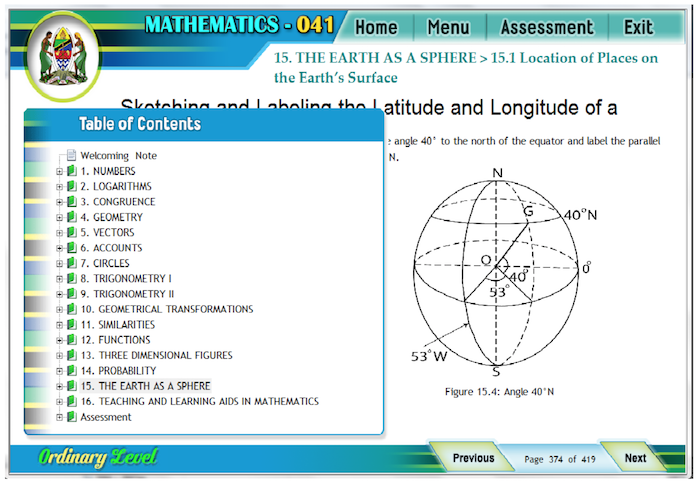
VOL. 2, No. 3
The failure rates and lack of interest amongst students in science and mathematics in secondary schools in Tanzania is a serious problem. The Ministry of Education and Vocational Training (MoEVT) implemented a project to enhance and upgrade the pedagogical knowledge and subject content knowledge of teachers in selected difficult topics in science and mathematics in secondary education. This article reports on the process involved in the development of multimedia enhanced content that involved teachers, facilitators, and technical staff. The developed content was evaluated for its satisfaction using a sample of 72 experts that included teachers and instructors after using the content for 10 days. Generally, respondents were satisfied with the quality of the developed multimedia enhanced content. However, accuracy had a minimum percentage of users’ satisfaction with 37%. This shows that the majority of the content had spelling and grammatical errors that were supposed to have been corrected before producing the final product. Although this is ongoing work, we believe that the lessons learned from our efforts can be useful to similar organizations planning to develop multimedia enhanced content for educational purposes.
Science and technology are vital tools for accelerating a country’s socio-economic development, especially in developing countries such as Tanzania (UNESCO, 2009). However, Tanzania is faced with an acute shortage of science and technology professionals in almost every sector, such as engineering, medicine, and architecture. Increasing the quality and quantity of such professionals will accelerate the country’s socio-economic development and reduce extreme poverty. Improving the quality of science and mathematics education in secondary education as a starting point is advantageous. This is because the knowledge acquired from the elementary stage provides a good base for courses such as medicine, biochemistry, and environmental sciences (Thomas & Israel, 2013).
Science and mathematics education in secondary education in Tanzania is faced with several challenges. As a result, the failure rates and lack of interest among students in science and mathematics in secondary schools is becoming a serious problem. It has been reportedpass rates in physics was 26.3% in 2008 and dropped to 13.7% in 2011, while that of chemistry was 32.9% in 2008 and dropped to 15.8% in 2011. A similar trend can be observed in biology and mathematics. For instance, the pass rate for biology dropped from 15.1% in 2008 to 9.4% in 2011, while that of mathematics dropped from 9.2% in 2008 to 5.8% in 2011 (MoEVT, 2012).
In addition, there is a severe shortage of qualified school science teachers in Tanzania. According to the World Bank project paper (World Bank, 2014), the country needs 26,998 secondary school science teachers immediately but the tertiary education institutions in the country can only produce 2,300 graduates annually. The project paper added that, of the current 10,400 in-service secondary school science teachers, many do not have sufficient pedagogical and subject content knowledge. While science and mathematics account for 46 percent of the curriculum, only 28 percent of teachers are qualified to teach these subjects.
Several interventions exist to address the situation. Some of the interventions include the School Science project, the School Mathematics Project, and iSPACES. For instance, the iSPACES project aimed to enable students and teachers in secondary schools use Information and Communication Technologies (ICT) to improve the quality of teaching and learning science, mathematics and English (Semali, 2013). The majority of these projects have been focused on students as well as equipping schools with ICT equipment. However, less effort has been made to upgrade science and mathematics teachers in pedagogy and subject content knowledge of the subjects they teach. Citing the importance of pedagogy and content knowledge of teachers, Ball and McDiarmid (1990) pointed out that,
The myriad tasks of teaching, such as selecting worthwhile learning activities, giving helpful explanations, asking productive questions, and evaluating students' learning, all depend on the teacher's understanding of what it is that students are to learn. (p. 1)
In alleviating this problem, the Ministry of Education and Vocational Training (MoEVT) implemented a project to upgrade subject content knowledge of science and mathematics teachers. Specifically, the project aimed to upgrade pedagogy and subject content knowledge of selected difficult topics in mathematics, physics, biology, and chemistry in secondary education.
The main objectives of this article are to report on the:
The project was designed to develop and integrate content with the latest ICT specifically multimedia elements. The choice of using multimedia to enhance the quality of content was based on the fact that the multimedia content can enhance learners’ understanding of concepts that cannot easily be explained using text alone (Thomas & Israel, 2013). They can also simulate real processes and execute “virtual experiments” that would be dangerous, and costly if conducted in a school laboratory (Hennessy, Deaney, & Ruthven, 2006).
The project is in line with the Ministry’s mission which includes the following statement, “Integrate ICT to enhance access, equity, quality and relevance of basic education, while stimulating and improving teaching and life long learning” (MoEVT, 2007). Although this is ongoing work, we believe that the lessons learned from our efforts can be useful to similar organizations developing, or planning to develop, multimedia enhanced content for educational purposes.
Upgrading the content knowledge of teachers in secondary education is important to the improvement of teaching and learning. The content knowledge includes “concepts, theories, ideas, organizational frameworks, evidence and proof, as well as established practices and approaches toward developing such knowledge” of a given subject (Koehler, Mishra, & Cain, 2013).
Failure rates of students in science and mathematics has been linked to a shortage of science teachers, text books and teaching aids in secondary schools in Tanzania (UNESCO, 2009). Less attention has been given to how teachers need to understand the subjects they teach (Ball, Thames, & Phelps, 1985). The lack of content knowledge has a direct impact on student achievement in a given subject (Metzler, & Woessmann, 2012). If teachers have inaccurate and inadequate knowledge of a given subject they teach, they might transfer their own misconceptions to their students (Özden, 2008).
Therefore, understanding the content knowledge to be taught is a central requirement of teaching (Ball, & McDiarmid, 1990; Shulman, 1987). In fact, teachers who are competent in the content knowledge of the subject can ask productive questions, prepare learning activities that enable students to learn and foster mastery of the content, and give helpful explanations to students (Ball & McDiarmid, 1990).
While mastery of content to teach is a central requirement for any teacher, formulating the subject-matter for student learning is also important (Shulman, 1987). For instance, a teacher may have adequate content knowledge the functions topic in mathematics but may lack the knowledge and skills in how to enable students to understand this content.
In addition to the lack of content knowledge of the subjects they are supposed to teach, many teachers do not have an adequate knowledge of pedagogy that is applicable to teaching science and mathematics in secondary schools. This knowledge is unique to teachers, and, in fact, is the heart of teaching (Cochran, 1992). Due to these challenges, students perceive these subjects as unattractive, very difficult, tedious, incomprehensible, boring, and irrelevant to understanding the world around them (Siabeycius & Poicin, 2012; Wieman & Perkins, 2005). Therefore, equipping teachers with content knowledge as well as pedagogical content knowledge will improve the quality of science and mathematics education in Tanzania.
The main objective of the ICT Retooling project was to improve the quality of teaching and learning in science and mathematics in secondary schools in Tanzania. It was designed to use the latest ICT to upgrade subject content knowledge of secondary school science and mathematics teachers on the topics perceived as difficult. The University of Dar es Salaam College of ICT (CoICT) developed and integrated the multimedia elements to enhance the content in the selected difficult topics.
The content was digitized and enhanced with various multimedia in order to facilitate self-learning. The developed multimedia enhanced content was packed into 2,500 Digital Versatile Disc (DVDs) and uploaded into the customized Moodle Learning Management System (LMS) (http://retooling.udsm.ac.tz). The content was also used to train a total of 2,000 teachers in 19 selected centres countrywide. In selecting teachers for the retooling project, an examination (pre-test) was given to 3,500 teachers in the selected centers. Out of 3,500 teachers, 2,000 teachers who did not do well in the pre-test examination were selected.
Sixty facilitators (15 from each institution) from Dar es Salaam University College of Education (DUCE), Mkwawa University College of Education (MUCE), the State University of Zanzibar (SUZA), University of Dar es Salaam College of ICT (CoICT), and the Open University of Tanzania (OUT) were tasked to train the selected 2,000 teachers (500 by each institution). The selected facilitators were faculty members who had the subject knowledge and training experience.
In the next section, the process of developing multimedia enhanced content is explained in detail.
Selection of Difficult Topics
The Ministry conducted the needs assessment to identify topics that were difficult to some students and, thus, needed improvement. Based on the needs assessment, a stakeholder meeting was held in Arusha comprising lecturers from the University of Dar es Salaam and the University of Dodoma, tutors from teachers’ colleges, school inspectors, and secondary school teachers. The meeting was held to identify the topics that were perceived to be difficult to teach and for students to understand. Information from the national examination results both current and historical were used to verify the results from the needs assessment and the failure rates in some selected specific topics.
A matrix was developed indicating various topics in the syllabi that were perceived to be difficult. A total of 70 topics and 147 subtopics were classified as difficult. The distribution of the topics and subtopics per subject is shown in Table 1.
Table 1. Distribution of topics and subtopics per subject.
|
Topics |
Subtopics |
Physics |
20 |
34 |
Chemistry |
20 |
47 |
Biology |
14 |
34 |
Mathematics |
16 |
32 |
Total |
70 |
147 |
Development of the Template
The development of content involved mainly two groups of people namely Subject Matter Experts (SMEs) and multimedia technical staff. The SMEs are teachers selected from secondary schools who are competent in science and mathematics subjects, with at least seven years of teaching experience. A total of twelve (12) SMEs (i.e., three for each subject: biology, chemistry, physics and mathematics) were involved. The multimedia technical staff are experts in developing multimedia enhanced content from CoICT.
In order to guide the content development process it was important to develop a course content template. Past course design experience was used to develop a template that allows for the creativity and excitement that helps SMEs to develop the content that is engaging and that will enable learners to learn independently. The template incorporated some important instructional design principles, such as Bloom’s Taxonomy (Bloom, 1956) and Gagne's nine levels of learning (Gagné, 1985) to ensure the developed content would meet the intended pedagogical objectives.
The developed template was used to train SMEs responsible for developing the content. The training took place at CoICT premises at Kijitonyama for one day. The training focused on the principles of creating learning materials for independent learning and content development templates. Participants also shared experiences on how to search resources that can be used to develop content for selected topics.
During the training, SMEs raised some issues that were supposed to be incorporated in the template. Comments and suggestions from SMEs during the training were incorporated in the template and the final content development template was agreed. Some of the components of the template include the rationale of the topic/subtopic, the welcome note, introduction of the topic/subtopic, the objectives, and the content of the topic/subtopic. Other components are the self-assessment section for SMEs to write review questions, a summary of the topic/subtopic, and links to additional resources.
Digitization of Content Blueprints
The SMEs of each subject used the agreed-upon template to develop the content blueprints. The process of content development was closely guided by instructional designers from CoICT, lecturers from DUCE, MUCE, SUZA, and OUT. The whole team met in Arusha for 11 days to help teachers to digitize content of the difficult topics.
Several resources were used to develop the content blueprints. First, some of the contents were summarized directly from secondary education textbooks. SMEs brought some textbooks that they have been using in teaching science and mathematics in secondary schools. The textbooks were from different authors. Most of these textbooks were those recommended by the Ministry. In addition, some of the content was summarized from teachers’ handouts.
Second, some of the content was carefully selected and downloaded from the Internet but they were edited to fit within the context of a given topic. Relevant Open Educational Resources (OER) repositories were identified with materials that could enhance the quality of each subject. The SMEs used these repositories to enrich the content of their topics. They also identified relevant videos and animations from these repositories that could help to enhance the text content. The links of each identified video or animation were inserted at the relevant point in the text content. The use of OER and Internet resources was in line with MoEVT policy (statement 6.2.6) that encourages “the use of free and easily accessible teaching and learning materials, as well as free and open source software” (MoEVT, 2007).
Development and Integration of Multimedia Elements
Once all the content blueprints were developed by SMEs, the CoICT team spent time to identify the kind of multimedia elements (video, audio, or animation) that would enable the content to be easily understood by learners. This process involved two teachers from each subject and two instructional designers. This team reviewed each topic and subtopic and discussed how the content could be enhanced for self-learning.
After identifying the multimedia elements suitable for each topic, 12 teachers and 20 technical staff from CoICT took 16 days in Morogoro to verify, validate, and convert the content blue prints into multimedia enhanced content. During this period, the identified links were revisited; videos were downloaded and edited. Table 2 shows the number of recorded videos from experiments conducted in the laboratory and developed animations.
Table 2. Number of recorded videos from experiments conducted in the laboratory and developed animations
Subject/Type |
Physics |
Chemistry |
Biology |
Mathematics |
Total |
Edited Videos |
16 |
6 |
39 |
7 |
68 |
Animations |
7 |
4 |
1 |
45 |
57 |
Recorded Videos |
10 |
9 |
5 |
1 |
25 |
Still pictures |
0 |
0 |
5 |
0 |
5 |
Recording and Editing of Videos
Some downloaded videos were found to be relevant and suitable for the syllabi and they were used directly to enhance the content. However, we had to re- record the voice in most of the downloaded videos. The majority of audio tracks in the videos were in accents associated with Western countries (e.g., America) as well as India. These accents would have been difficult for students to understand. Therefore, the subject matter experts had to record the new voice-overs in English with a Tanzanian accent. The videos were edited using Adobe Premier Pro while Adobe Audition was used to record voice-overs for each selected video. The CoICT team inserted the new videos into the content using Lectora Software. Figure 1 shows an example of the interface designed using Lectora Software that was used to integrate multimedia elements into the content.

Figure 1: The design of interface used to integrate multimedia elements into the content
In addition, some videos could not be found in the OER repositories. The majority of such videos were those related to experiments. Arrangements were made to record them in the nearest secondary school. The requirements of each experiment were established, such as the chemicals, specimens, and facilities needed for each one. Once the requirements were established, the nearest schools were consulted and visited for recording.
Before recordings were made, SMEs wrote the scripts and then rehearsed the material. The rehearsals were very useful as they enabled the technical team to record for only a short time. The actual recording of the videos took 10 days at Kilakala secondary school. The recorded videos were then edited, and inserted into respective topics in the content.
Development of Animations
Apart from videos and voice-overs, the content was also enriched with animations. Animations were intended to enhance the pedagogical content knowledge in areas of the content that was difficult to explain using text alone (Murray & Guimaraes, 2008). Some teachers had good subject content knowledge but lacked the knowledge to explain to students in a manner that could enable students to understand the concepts. Animations played a significant role in overcoming this. As shown in Table 2, there were a total of 57 animations for all subjects.
Most of these animations could not be found in the OER repositories and therefore the team had to develop them from scratch. The animations were developed using Adobe Flash software while others were narrated and repackaged using Microsoft PowerPoint. The animations were developed as Learning Objects to explain specific concepts that seemed to be difficult for students to understand.
The design and development of animations was based on interaction design and graphic design principles proposed by Holzinger, & Ebner (2003). The graphic design such as colours, navigations bars, and appearance were selected carefully to ensure the animations were attractive, engaging and intuitive, and to enable learners to navigate easily. It should be noted that poorly designed animations are often cognitively demanding and decrease students’ learning outcomes (Koning, Tabbers, Rikers, & Paas, 2011).
Moreover, the controls were added (such as pause and replay buttons) to enable students to review the animation at their own pace and time. According to Mayer and Chandler (2001), learners learn better when they control the pace of the instruction. For complex animations, instructions were provided to enable learners to understand various concepts in visual form complemented by text.
Multimedia Integration
The developed multimedia elements were integrated into content using Lectora software. The content of each subject was proofread and checked for errors and consistency. The videos and animations were replayed to ensure that they were playing correctly as per the written scripts. The multimedia enhanced content was then uploaded into the Moodle Learning Management System (LMS) and also burned onto DVDs.
The final version of the multimedia enhanced content was validated by a team of stakeholders who spent 8 days in Mwanza from 16-23 December 2014. The validation team included 60 facilitators from DUCE, MUCE, OUT and SUZA, and 20 teachers from secondary schools. The content was validated to check that:
Knowledge Gap
The validation team agreed that the majority of the content covered the perceived difficult topics. However, more content was added for almost every topic and subtopic in order to enhance the existing content. The team also corrected spelling and grammatical errors.
Quality of Multimedia Elements
The majority of the videos downloaded from the OER repositions were found to be of good quality. Nonetheless, 21 videos out of 68 were replaced, as they did not provide the required pedagogical value to the intended content. In many cases this happened after the initial content was changed or edited extensively, thus leaving the multimedia elements disconnected from the new content. Moreover, 10 videos were found to be poor and the team re-recorded them. The videos were re-recorded at DUCE campus using facilities of the demonstration secondary school.
Design and Presentation of the Multimedia Enhanced Content
The majority of members of the evaluation team were satisfied with the design of the interface and the overall feel and look of the template used to develop and integrate multimedia content. However, a few suggestions were made. These include:
Educational multimedia development requires substantial resources. Therefore, it is important that both the processes and products of multimedia development are evaluated (Albion, 1999). A user satisfaction study was conducted to find out if prospective users were satisfied with the multimedia enhanced content that was developed.
We adopted five components: content, accuracy, format, interface, and satisfaction from two studies (Doll, & Torkzadeh, 1988; Wang, 2003) that were relevant for this study. The questionnaire comprised 17 questions categorized into five components. Respondents were asked to rate each question using a 5-point Likert scale ranging from strongly disagree to strongly agree.
The respondents were also involved in the validation process of the multimedia enhanced content. These were 20 science teachers from rural secondary schools in the Kagera and Mara regions, 60 facilitators from 4 Universities (DUCE, MUCE, OUT and SUZA), 16 SMEs, and 15 education professionals from the Ministry. They spent 10 days reviewing the multimedia content in groups of 5.
Out of 100 questionnaires distributed, 72 respondents completed and returned the questionnaires.
Interface
The interface has a significant direct positive influence on learners’ satisfaction and usage of the multimedia enhanced content (Ardito et al., 2005). If the interface is easy to use and learn, learners will use the system more often and they will be satisfied (Mtebe & Raisamo, 2014a). On the other hand, an interface which is not user-friendly will cause learners to spend more time learning how to use it rather than learning the content (Ardito et al., 2005) and they might feel lost, confused, or frustrated (Tarigan, 2011).
Respondents were asked to rate the ease of use, user-friendliness, and the ease of learning with the interface. As shown in Figure 2, the majority of respondents (89%) indicated that the interface was easy to use, 91% indicated that the interface was user-friendly, and more than two-thirds of the respondents (78%) indicated that the interface was easy to learn.
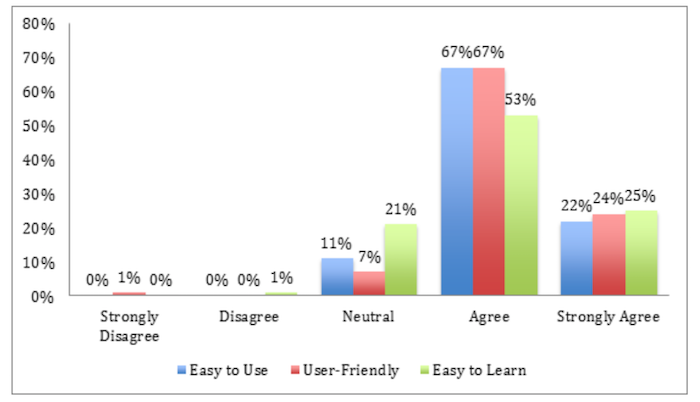
Figure 2: Respondents’ feedback on usability of the interface of multimedia content (n = 72)
Format
Respondents were asked to rate if the sequence of the content was effectively organized and easy to follow by learners. Seventy-seven percent of respondents indicated that the content was effectively organized to allow learners to follow without much difficulty. However, 17% of respondents were neutral while 5% of respondents disagreed (See Figure 3).
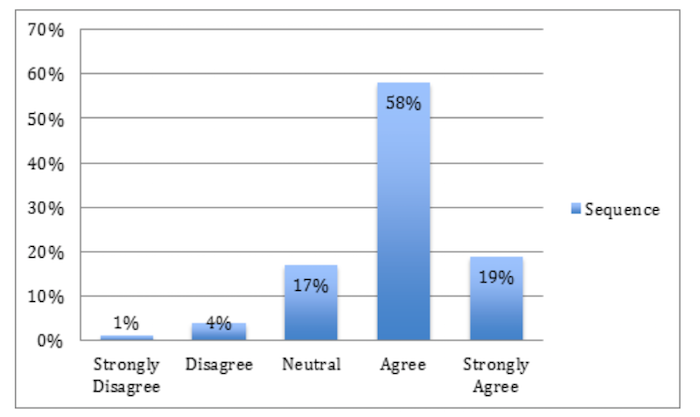
Figure 3: Respondents’ feedback on the format of multimedia content (n = 72)
Content
Learners satisfaction is influenced more by the quality of the content than by the type of technology used to deliver the instructions (Tarigan, 2011). Tarigan added that systems that cannot provide sufficient content for understanding a subject matter normally results in learners’ dissatisfaction. Therefore, it is important to evaluate if learners are satisfied by the quality of the content.
Respondents were asked to rate the quality of the multimedia enhanced content. The majority of respondents rated the content was up-to-date (85%), followed by 86% of respondents indicating that the content had sufficient content to enable learners to complete the learning process, and 84% of respondents indicated that the content has educationally significant concepts, models, and skills for the subject. Figure 4 indicates respondents’ feedback on the quality of the content.

Figure 4: Respondents’ feedback on the quality of the multimedia enhanced content (n = 72)
Moreover, 77% of respondents indicated that multimedia items such as videos, animations and simulations included in the content allowed learners to control content. In addition, 78% of respondents indicated that the content was presented appropriately to suit the learners’ knowledge, skills and abilities, while 22% of respondents were neutral and none of the respondents disagreed (See Figure 5).

Figure 5: Respondents’ feedback on content control and learners’ knowledge of the content (n = 72)
Accuracy
Inaccurate content can mislead learners. Therefore, it is important to develop content that is free of spelling and grammatical errors. Respondents were asked about the accuracy of the content and if the content was free of spelling and grammatical errors. Thirty-eight percent of respondents indicated that the content was free of spelling and grammatical errors, while 19% of respondents disagreed and 43% were neutral.
In terms of accuracy, nearly two- thirds (68%) of respondents indicated that the content was accurate while 28% of respondents were neutral and only 4% respondents disagreed (See Figure 6).
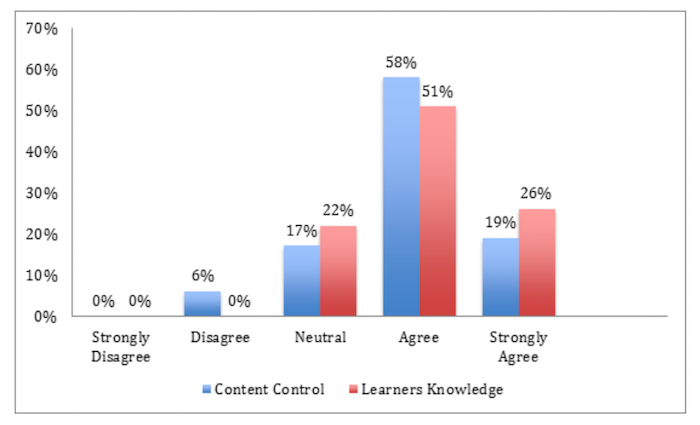
Figure 6: Respondents’ feedback on accuracy of the content (n = 72)
General Satisfaction
Respondents were asked to indicate their general satisfaction about the multimedia enhanced content. The majority of respondents (89%) were satisfied with the multimedia enhanced content, while only 10% of respondents were neutral. However, 1% of respondents were dissatisfied. Figure 7 shows the distribution of respondents based on overall satisfaction with multimedia content.
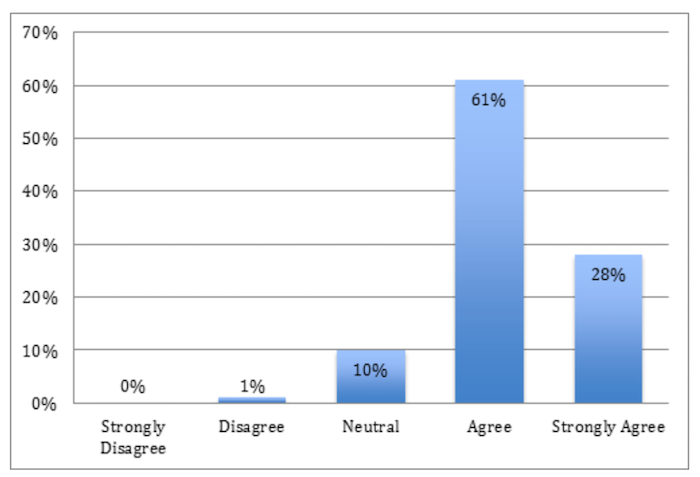
Figure 7: Distribution of scores regarding overall satisfaction with the multimedia content (n = 72)
Content Improvement
Another workshop was organised with 12 SMEs and 19 technical staff to improve the multimedia enhanced content, taking into account proposed improvements that were suggested during the validation workshop in Butimba, Mwanza. The workshop took place in Morogoro for 10 days.
The number of videos that were proposed in Butimba increased significantly. The evaluation team thought that videos were useful, especially for content that was developed for self-learning. Therefore, more video clips were proposed in almost every subtopic. Due to the increased number of videos, seven (7) technical staff were sent to Nairobi, Kenya to be equipped with the skills necessary to record and edit videos. This training took place for five (5) days.
After the second improvement workshop, the content was ready for packaging. The work started by developing the content in the Lectora software. The Lectora version of the content was then burned onto the DVDs. A total of 2,500 DVDs were burned with multimedia enhanced content. The DVDs were also labelled in order to differentiate between DVDs on different subjects. Figure 8 shows a sample of the printed DVD. The DVDs were then distributed to four institutions, with each receiving a total of 600 DVDs.
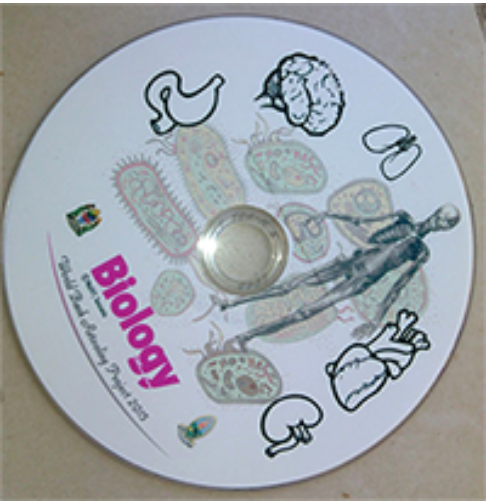
Figure 8: Sample Copy of a Printed DVD for Biology
The same content was then uploaded into the customized Moodle LMS. In order to ensure quick and easy access of the content, the videos were uploaded in YouTube and then linked into the LMS. The LMS was registered and it is accessible via http://retooling.udsm.ac.tz. Facilitators were registered and given usernames and passwords to access the system.
The failure rates and lack of interest in science and mathematics in secondary education has a negative impact on the economy. It creates a negative cycle for producing technicians, engineers and scientists that the country needs for its economic transformation. This has a serious effect on the country’s economic development and aspirations to transform itself into a knowledge-based economy. The majority of existing initiatives to improve the quality of science and mathematics teaching and learning have focussed on increasing the number of science and mathematics teachers, improving teaching and learning infrastructures, equipping schools with ICT and other teaching facilities in various schools.
However, few initiatives have focused on upgrading pedagogical knowledge and subject content knowledge of in-service teachers, especially using ICTs. The findings and experience gained from this project will help other institutions planning to develop multimedia enhanced content to improve pedagogy and/or subject content knowledge of teachers in secondary education.
The most interesting finding emerged from this study was that the majority of members of the evaluation team indicated that the content had spelling and grammatical errors during a validation workshop. This was evident from the fact that 19% of respondents disagreed and 43% were neutral when asked if the content was free of errors and spelling mistakes. This was expected given the small number of SMEs and the timeframe that was provided to develop the content. The project utilized two SMEs for each subject to develop the content. This is a small number of experts compared to the number of topics and subtopics that was supposed to be developed.
Time constraint was another major factor, since most of the activities were implemented towards meeting the project deadline. For instance, SMEs spent 10 days in Arusha and 10 days in Morogoro to develop content blueprints. In fact, the time allocated to develop the content and proofread the developed content was too short. If SMEs were given enough time, errors and spelling mistakes would not have been made in the first place. However, the next workshop that was held after the validation workshop improved the accuracy of the content.
Another important finding from implementing this project was that there was very little OER content that was relevant to the context of the syllabi in Tanzanian secondary education. Most of the resources were either irrelevant or focused on higher education. Generally, Unwin et al. (2010) noted that, there is relatively little indigenous African content in the OER repositories. Unwin and colleagues added that this is due to the fact that the majority of teachers in Africa do not have expertise and experience to develop teaching content. As a result, most of the content and multimedia elements were developed from scratch.
The most interesting experience obtained from this project was that, many teachers in secondary schools are not aware of copyright and licensing issues regarding the use of content from the Internet. Initially, teachers downloaded videos and copied notes from the Internet without checking the copyright of the contents. As a result, some content was found to be protected by copyrights while others had Creative Commons (CC) licenses with various options. We had to revisit all the multimedia elements and remove all elements that were protected under copyright and intellectual property rights. Also, we had to acknowledge the content based on specific CC licences specified in the original materials.
The findings of the study corroborates similar studies that were conducted elsewhere in Tanzania. For instance, Mtebe and Raisamo (2014b) found that nearly two thirds of respondents did not have the skills to use OER, including the CC licensing, in a study conducted in 11 higher education institutions in Tanzania. Similarly, Samzugi and Mwinyimbegu (2013) found instructors and students depended on librarian assistance to find relevant OER due to lack of skills to find OER.
These findings clearly indicate the need to conduct awareness workshops and train teachers and SMEs on how to create and/or use already existing OER from various repositories. In addition, there is also a need to encourage teachers to develop quality local content and share them in OER repositories.
The purpose of the current study was to report on the process involved in the development and integration of multimedia elements into content that was going to be used to enhance the pedagogical knowledge and subject content knowledge of secondary teachers in Tanzania. Moreover, the developed multimedia enhanced content was validated and evaluated by a group of stakeholders involving teachers, SMEs, facilitators, and educational experts from the Ministry.
While the development process had some challenges, the majority of users were satisfied with the quality of the developed multimedia enhanced content. The article has reported the findings of an ongoing project. The benefits of multimedia enhanced content will be realized once the teachers have used the content for some time. A study to investigate the extent to which the developed multimedia material enhanced and upgraded pedagogical knowledge and subject content knowledge of teachers in the subjects they teach should be conducted. Ultimately, the effect of the use of the material on the grades of students will determine the effectiveness of the multimedia enhanced material.
Acknowledgements
This paper emerged from a larger Ph.D study that was funded by the Swedish International Development Agency (Sida) through the Embassy of Sweden in Kampala (Uganda), and the Directorate of Research and Graduate Training (DRGT) at Makerere University.
Joel S. Mtebe is a Lecturer of computer science and eLearning in the department of computer science and engineering, College of Information and Communication Technologies. He is also the Director of Center for Virtual Learning (CVL), of the University of Dar es Salaam, Tanzania.. E-mail: jmtebe@gmail.com
Elia Y. Kibaga is the Director of Research and Documentation at the Tanzania Institute of Education. E-mail: kibgaelia@yahoo.co.uk
Alfred A. Mwambela is a Senior Lecturer of electronics at the department of electronics and telecommunication Engineering, College of Information and Communication Technologies, University of Dar es Salaam. E-mail: nkomo98@yahoo.com
Mussa M. Kissaka a Senior Lecturer of electronics at the department of electronics and telecommunication engineering, College of Information and Communication Technologies, University of Dar es Salaam. He is also a Principal of the College of ICT. E-mail: mkissaka@yahoo.com